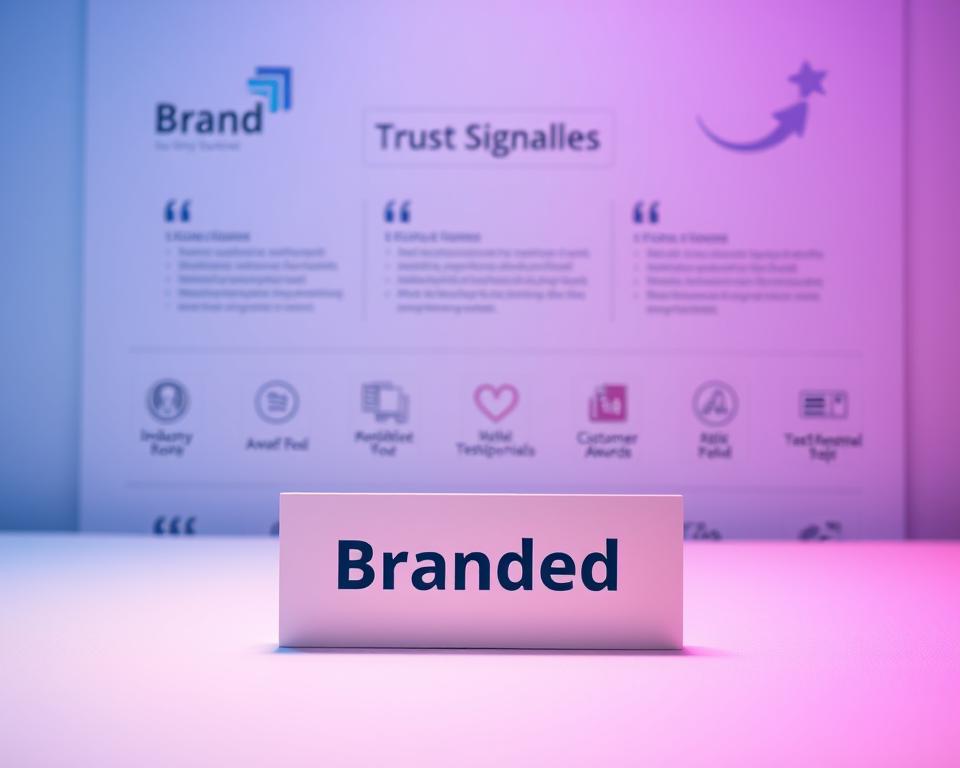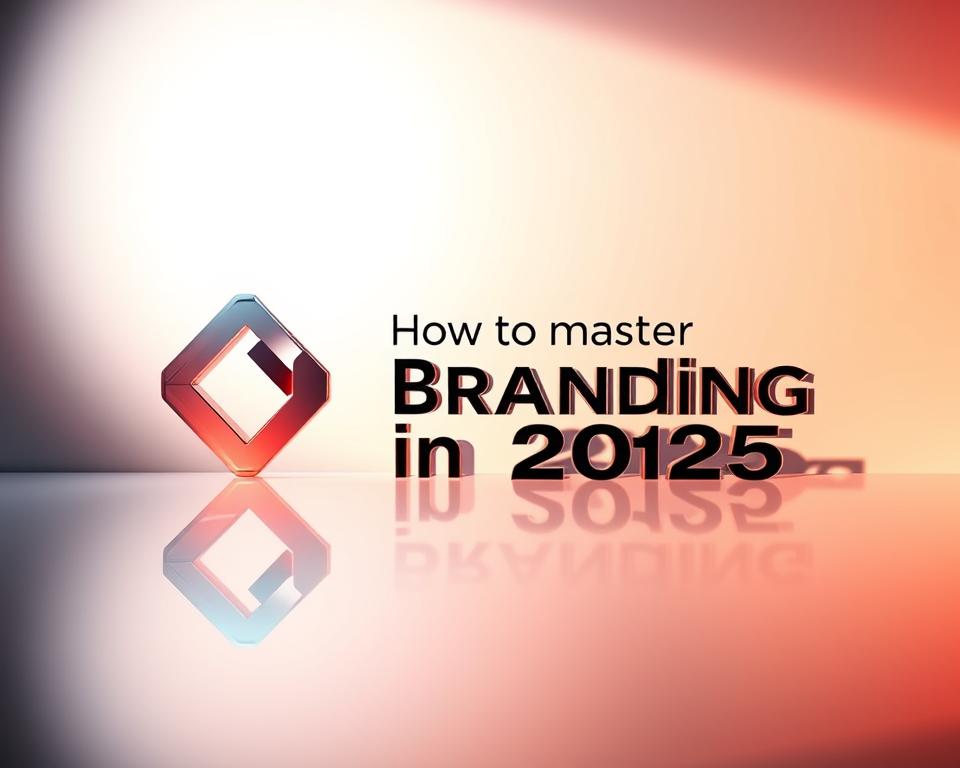Anúncios
Can a new logo really fix slow sales, or is that just a clever story?
You’ll get a clear, data-informed listicle aimed at the U.S. market. This piece breaks down common branding myths and shows practical steps you can test quickly.
Leaders often confuse a brand with a logo or design. But a true brand ties identity, operations, and customer experience across the full audience journey. We use recent data, real examples like Burger King’s 2021 rebrand and Chanel’s long-term equity, and short, actionable steps you can try.
Expect guidance, not guarantees. Each point includes metrics and small-experiment ideas. You’ll see how brand work relates to marketing and where to focus resources for the biggest impact.
By the end, you’ll know what to prioritize to build a strong brand over time and how to validate choices with real people and measurable learning.
Anúncios
Introduction: branding myths that hold businesses back in the U.S. market
branding myths still keep many businesses from treating identity work as strategic, not cosmetic.
Many teams adopt easy rules because they make complex choices feel safe. That habit helps ideas spread among people, but it often clashes with reality and slows growth in the U.S. market.
You should know these recommendations are informative guidance, not guarantees. Test small, measure, and iterate. Use reliable data and short experiments to see what resonates with your audience and customers over time.
Anúncios
Confusing brand work with marketing or advertising leads to short-term fixes that miss long-term value. This guide blends data, clear examples, and practical steps so your company can align values, define the audience, and prioritize where identity work creates leverage.
- Why myths stick: they simplify hard choices into rules of thumb.
- What to avoid: equating identity with a logo or a single campaign.
- How to act: run small tests, measure impact, and let evidence shape time and spend.
Myth: Branding is just a logo — Truth: Identity, experience, and consistency across touchpoints
A logo can start a conversation, yet it rarely closes the loop on trust or service. Three in four U.S. customers say look and feel matter, but the reality is broader: a brand lives in voice, policies, and every interaction.
Design is vital, but it’s one element of a larger system. Tone of voice, service standards, packaging, and follow-up shape how customers judge quality and values.
How Chanel shows the wider system
Chanel pairs a refined palette and high‑quality imagery with storytelling and celebrity ties. That mix builds associations—elegance and glamor—that go beyond products to shape perception.
Practical map and quick audit
Run a simple audit: list 3–5 top touchpoints, rate experience quality, and note consistency gaps. Prioritize fixes that affect customers most.
- Map elements: logo, tone, messaging pillars, support policies, response times.
- Score each touchpoint for alignment and quality (1–5).
- Plan 1–2 small A/B tests on messaging or scripts to measure satisfaction changes.
- Document rules in a living guide and train teams to act the same way.
Bottom line: you should treat identity as operational. Test, iterate, and connect values to actions so your company delivers what it promises—not just what it displays.
Myth: Branding equals advertising — Truth: Advertising amplifies, branding defines
Paid media can boost short-term demand, but it won’t create lasting meaning on its own. Advertising and brand work serve different goals and timelines. One persuades quickly; the other shapes how people remember you over time.
Different goals and time horizons: persuasion vs. perception
Advertising drives immediate responses—clicks, signups, promotions in a defined window. Brand builds perceived value, loyalty, and trust that compound over months and years.
What to measure: awareness, loyalty, and market share alongside campaign KPIs
Use a balanced mix so you don’t chase short wins at the cost of long-term value.
- Brand awareness, preference, and market share for long-term insight.
- Conversion rate, CPA, and ROAS for campaign performance.
- Lightweight experiments: brand lift studies during campaigns and quarterly tracking.
Reality check: ads perform best when your brand is defined and consistent. Split budgets between demand creation and demand capture, test, and decide by business stage and category dynamics.
Myth: Branding and marketing are the same — Truth: Brand sets the foundation, marketing activates it
Confusing your core purpose with campaign mechanics makes every decision reactive, not directional. Your brand defines who you are and what you promise. Marketing picks channels and tactics to deliver that promise and convert customers.
Strategy differences: long-term identity vs. channel tactics
Brand identity is the long game: mission, values, proof points, and the visual/verbal elements that make you memorable. Marketing adapts to moments, testing creative, offers, and formats to drive response.
Workflow: Build brand platform first, then choose the right marketing plays
Follow a short, practical workflow you can apply today.
- Codify positioning: state your audience, problem, and unique promise.
- Document narrative and visual/verbal elements in a living guide.
- Map audience segments and jobs-to-be-done to services or product offers.
- Design channel experiments (small pilots) for paid, email, content, and social.
- Measure results, scale winners, and run quarterly reviews to refine core elements.
Reality: marketing wins are rarely repeatable without a defined brand platform. When you tie positioning to messaging and channels, campaigns stay coherent and easier to scale.
Quick checklist:
- Positioning? ✔
- Creative guidelines? ✔
- Pilot plan with metrics? ✔
Myth: Branding is only for big companies — Truth: Effective branding scales regardless of size
You don’t need to be a household name to shape how customers see your business. Small teams can build a clear platform that guides decisions and cuts wasted effort.
Right-size your work: core values to a lean style guide
Start small: codify purpose, two to three values, a single promise, and one proof point. A one-page brief often beats a long deck.
Keep a living guide with voice rules and simple visual do’s and don’ts. Update it as you learn.
Low-cost validation: social media and content
Use social media and short-form content to test messages fast. Run low-cost experiments: two posts with different tones, a short survey, or three customer interviews.
63% of global consumers say they buy or advocate for brands based on shared values and beliefs.
- Starter checklist: one-page brand brief, starter asset library, and a sustainable content cadence.
- Test on small audiences, gather feedback, then scale what resonates.
- Upgrade design or research only after traction—avoid over- or under-investing early.
- Define purpose, values, promise.
- Create a lean style guide (voice + visuals).
- Validate via social posts, ads, and chats with customers.
Reality: clarity and consistency matter more than size. With discipline, your team can express values and win loyalty regardless of budget.
Branding ROI and value: asset building, not just spend
Think of a brand as an asset that grows over time, not a line item in a single quarter. When you treat identity work as cumulative, you can measure how clarity and consistency add value to your company.
Data matters: McKinsey reports the world’s 40 strongest brands outperformed the MSCI World by 73% in shareholder returns. That shows how top brands can compound financial returns over time.
What investors and talent look for
Investors and candidates assess three practical signals: clarity of positioning, protectability like trademarked marks, and credibility backed by proof points.
Clear identity and evidence of delivery make companies easier to value and hire for.
How to build measurable asset value
- Trademark core marks and protect IP.
- Codify standards and document case evidence that proves your promise.
- Track awareness, preference, retention, and CAC payback to link perception to revenue.
The reality: results vary by category and execution. Still, when you focus on disciplined measurement and regular brand audits, you increase the likelihood that perception, pricing power, and margin resilience will improve.
Myth: Branding doesn’t affect sales — Truth: It shapes preference, loyalty, and lifetime value
Sales don’t appear in a vacuum; preference and trust steer many buying moments. The reality is that identity work changes how customers see your products before they compare price or run a promo search.
Trust and perceived quality help customers choose you again. Data shows 82% of consumers say their favorite brand tries to build a relationship, and 92% expect consistent experiences. Younger buyers are loyal: 69% of Gen Z and 70% of Millennials will go out of their way to shop at a favored name if the nearest location is closed.
How trust and perceived quality influence repeat purchase
Indirect pathways include higher preference scores, reduced price sensitivity, and stronger retention. Those pathways boost lifetime value and referrals even when advertising drives the initial visit.
- Track preference and repeat-purchase rates, not just single-visit conversion.
- Measure NPS, retention cohorts, and willingness-to-pay in short surveys.
- Run low-friction tests: alternate messaging, packaging, or onboarding flows to see changes in adoption and satisfaction.
“Design onboarding and post-purchase touchpoints to reinforce the promise; small tests reveal real lift.”
Practical rule: combine performance tests with simple brand metrics. That way you can prove how trust and quality perceptions move revenue over time without guessing.
Myth: Wait until later — Truth: Start early, iterate as you learn
Don’t delay basic identity work until after launch. You can move fast while still giving customers a coherent experience. Set minimal assets so product, service, and messaging align from day one.

Launch readiness: brand basics to align product, service, and messaging
Create a small system: a one‑sentence positioning, 3 voice rules, a primary palette, and a simple logo lockup. Pair those with key service promises and product claims so early buyers see a consistent offer.
Case insight: Burger King’s rebrand and trend alignment
Burger King’s 2021 refresh modernized its logo and palette while leaning into nostalgia and food‑quality trends. They evolved despite growth to reflect changing customer values like cleaner labels.
- Scope a quick branding project: week 1 positioning, week 2 visual kit, week 3 messaging, week 4 launch assets.
- Iterate: gather feedback, tweak claims, tweak packaging, and adapt support flows.
- Cadence: review brand health quarterly and plan light lifts when trends or data suggest change.
Myth: Follow design trends — Truth: Anchor in core values, evolve with purpose
Trends can feel exciting, but a fast pivot in visual style often confuses customers more than it convinces them.
Design should serve your company’s strategy and values, not the latest aesthetic wave. Strong organizations update identity elements only when the change clarifies meaning, improves accessibility, or better meets customer needs.
Before you adopt a new look, evaluate the idea through a practical lens: does it align with your core values, audience expectations, and usability requirements? If the answer is no, skip it.
Simple checklist to decide when to evolve:
- Does the change reinforce your value promise or just chase novelty?
- Will it improve clarity, legibility, or accessibility for real users?
- Can you prototype and test the direction with customers before a full rollout?
Governance matters: document design rules, version changes, and who approves updates. That process keeps identity consistent and reversible when needed.
“Frequent redesigns can erode recognition and signal instability.”
In reality, measured evolution preserves recognition and trust. Test small, explain the why to teams, and let values guide every logo or design refinement.
Myth: Branding is a commodity — Truth: Tailored strategy beats off‑the‑shelf packages
One-size offers sell speed, not fit; a mismatched approach can create long-term costs.
Cheap, off-the-shelf packages often treat identity like a product you buy once. That model undercuts expertise and skips the discovery steps that reveal real problems and opportunities.
You should expect a tailored process to include focused research, stakeholder alignment, and clear decision frameworks. Those steps help you choose which elements to build now and which to defer.
Scope your work by outcomes: clarity, adoption, and consistency. Then pick deliverables that support those goals, not a fixed list of assets.
- Beware services that promise many revisions or rush delivery; speed can mean superficial output.
- Look for partners who show process transparency and measurable impact on real companies.
- Prioritize discovery depth: customer insight beats a prettier logo every time.
“The best approach fits your constraints and use cases, not an off-the-shelf formula.”
- Ask: What business outcome must this project move?
- Ask: Which elements drive adoption now versus later?
- Ask: How will success be measured and who signs off?
Reality: a well-scoped branding project protects budget and focuses the team on work that actually performs in-market.
branding myths you should stop believing today
Stop treating every opinion as your roadmap; focus on the people who actually buy from you.
Quick hits:
“Please everyone” → pick a few people and speak clearly
Trying to please all people dilutes your voice. Wendy’s shows how a focused tone helps a brand stand out. You’ll do more by defining two or three best-fit segments and testing one voice per segment.
“Perfect product sells itself” → add context and proof
A great product still needs signals: reviews, case studies, and a simple narrative that explains why it matters. Run a short A/B test pairing product pages with a two-line proof point and measure lift.
“B2C only” → businesses of every size need trust signals
B2B buyers use peer validation and clear claims to decide. Small vendors can compete by publishing short customer stories and transparent metrics.
“Logo-first fixes” → experience makes symbols meaningful
A new logo helps recognition, not delivery. Prioritize consistent service, messaging, and one repeatable proof point before large visual work.
“Run three small checks this week: audience clarity, proof inventory, and a one-message per-channel test.”
- Clarify your best-fit people and test messaging on them.
- List top proof points and pick one to highlight.
- Measure response, document what works, then iterate—without expanding scope.
B2B, B2C, and even B2P: Why every model needs a coherent brand
Every business model benefits when customers and clients can quickly see who you are and what you promise. A clear brand reduces perceived risk and helps people decide faster across the U.S. market.

Trust matters: 92.4% of businesses say they’re more likely to buy after reading a trusted review, and 63% of consumers choose brands that match their values.
Trust signals: reviews, authority, and category differentiation
Build practical proof that maps to your services and audience. For B2B, highlight ROI, uptime, and case studies that show measurable outcomes.
For B2C, lead with outcomes, social proof, and values-driven stories that match customer beliefs.
- Credible reviews and rated testimonials.
- Short case studies with metrics for companies and clients.
- Certifications, press mentions, and authoritative content.
Operationalize proof: ask for reviews respectfully, offer templated reference requests, and log permissions for quotes. Track referrals and qualified leads as leading indicators of impact.
“Differentiation comes from consistent promises and follow-through, not a logo alone.”
- Map which proof matters per audience.
- Create a simple review and reference workflow.
- Measure referral-sourced opportunities and lift in qualified customers.
Internal branding: Your employees are powerful brand touchpoints
Frontline people are often the clearest living expression of what your company actually does. Employees shape daily experiences that customers remember.
Employer brand and EVP: Attracting and retaining talent
Define an EVP that matches what you can credibly deliver. A clear offer helps attract candidates and lowers churn.
Reality check: over half of employees searched for new roles recently, so a lived EVP matters more than polished promises.
Operationalizing values: Training, guidelines, and rituals
Turn values into actions with short onboarding modules, weekly rituals, and simple playbooks for support and sales.
“Teach one behavior at a time, then test whether customers notice.”
- Create a one-page EVP and share it in hiring and onboarding.
- Build service scripts and micro‑trainings tied to core values.
- Run feedback loops so people report gaps between promise and reality.
- Measure staff sentiment and customer touchpoint scores.
- Celebrate stories that show your values in action.
- Iterate monthly and keep guidelines concise.
Bottom line: treat employees as the primary channel for your brand—train, listen, and refine so services and customers both benefit.
Consistency vs. adaptation: What to keep steady, what to flex
Clear rules about what stays constant make room for smart, evidence-based updates. Decide early which parts of your brand are non-negotiable so teams can move fast without fracturing recognition.
Steady: purpose, values, and core identity
Your core and core values are the foundation. Keep purpose, promise, and the main identity intact across channels.
These elements build trust over time and guide hiring, product decisions, and long-term strategy.
Flexible: messaging, creative, and channels by audience and trend
Messaging, creative, and format should change by audience, platform norms, and measured performance.
Adapt for social media and local audiences, but don’t chase trends that contradict your identity.
“Adaptation should serve people and goals, not trends for their own sake.”
- List sacred elements (purpose, proof, visual lockups).
- Define adjustable elements (tone, ad creative, channel mix).
- Set review cadences and success metrics before you launch changes.
- Maintain recognition with small design variations tied to testing.
- Use data: audience signals and performance to decide when to flex.
- Keep guardrails so people know what’s sacred and what’s adjustable.
Reality check: purposeful updates preserve equity while letting you tailor experiences to real people and trends.
Brand analytics: Measure what matters for identity and performance
A balanced analytics plan reveals both how people remember you and how you perform in the market. Use a small, repeatable set of measures so you can test ideas, learn, and act without getting lost in dashboard noise.
Metrics mix: awareness, consideration, preference, NPS, share
Assemble a metrics mix that captures identity strength and go‑to‑market performance.
- Awareness: aided and unaided recall from short surveys.
- Consideration & preference: preference lift and channel-level conversion.
- NPS & loyalty: track promoters, detractors, and retention cohorts.
- Market share & efficiency: share of search, category share, CAC and ROAS in marketing.
Methods: brand audits, surveys, and social listening to guide iteration
Pair quantitative KPIs with qualitative checks. Run quarterly brand audits to score the consistency of core elements and customer experience across touchpoints.
- Short surveys and 10–15 customer interviews to verify your audience interprets messages as intended.
- Social listening to spot sentiment shifts and creative that resonates or falls flat.
- Lightweight experiments (A/B messaging, small creative tests) before larger spend.
Close the loop: convert insights into a prioritized action list, document learnings, and repeat the cycle so your building brand work improves with real customer feedback.
Measurement reduces guesswork; it shows where identity investments create real market impact.
Conclusion
End your project with a practical plan: small tests, clear metrics, and documented learnings.
Focus on effective branding as a steady practice, not a one‑time fix. Run short experiments that show what your people and customers actually respond to. Track results, learn fast, and keep decisions tied to evidence.
There are no guarantees, only better ways to reduce risk. Treat each branding project as an iterative step in building brand value: prototype claims, validate, and repeat. Document choices so your work compounds instead of resetting.
Strong brands grow by consistent delivery, purposeful evolution, and measurement. If you want a quick refresher on common traps, see branding myths explained.
Your next best step: pick one small test that fits resources and goals, measure it, and make the next move based on what people actually do. That way you’ll keep building brand strength while serving your customers and living your values.



